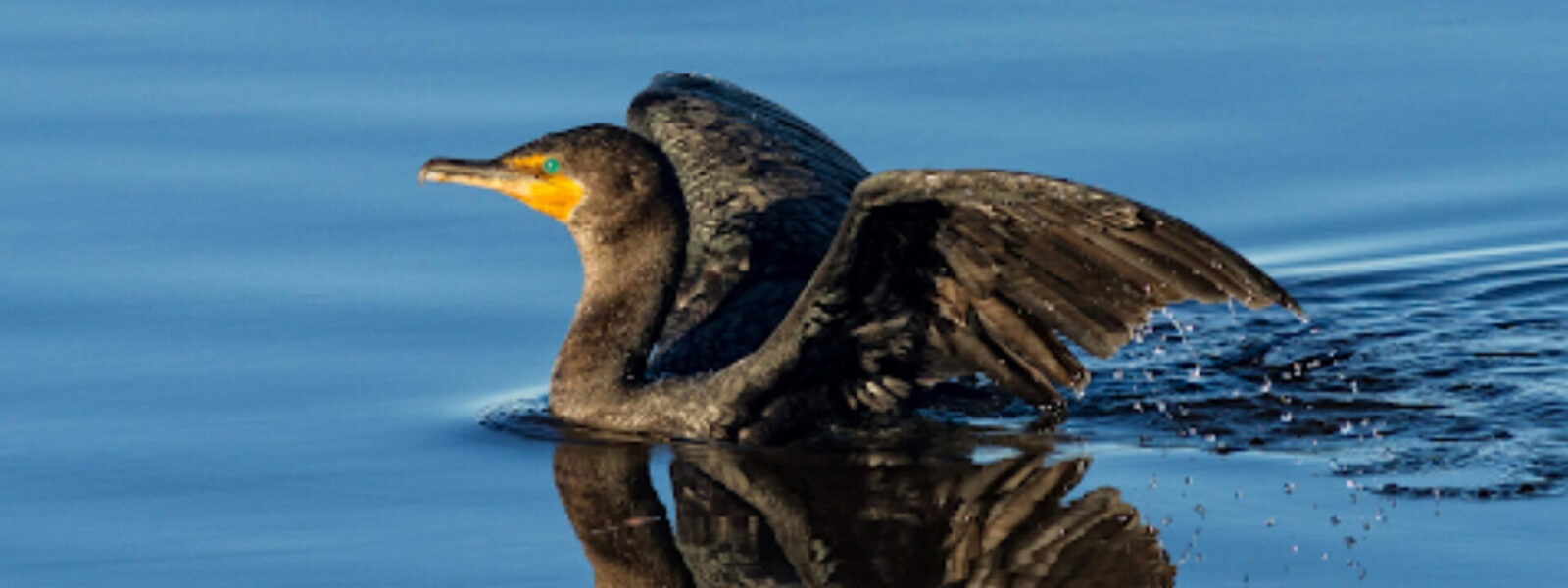This post was originally posted by the Vail Daily. See the original posting here.
February is National Embroidery Month — did you know? It’s also National Hot Breakfast Month and Black History Month. Observed annually on Feb. 14 is the well-known Valentine’s Day, and February 17 is National Cabbage Day.
These monthly observations can be quite fun to learn about and celebrate – perhaps with some sauerkraut on the menu. But when we saw that February is National Bird-Feeding Month, Eagle River Watershed Council staff decided that it’s timely to share some important information about our feathered friends and the role our rivers and streams play in their lives.
From providing drinking water and food sources to offering shelter and places of rest, riparian ecosystems, or areas adjacent to waterways, are critical in the life cycles of birds. Let’s take a closer look at why this is, and what we can do to ensure our backyard birds, as well as those that migrate through our mountains, stay healthy.
Like all animals, birds need to drink water to survive. Since they have no sweat glands, they require less water than mammals, but most still need to drink at least twice a day to replace water lost through respiration and in their droppings. Birds that eat mostly seeds drink more than birds that consume mostly insects.
When birds splash around in birdbaths and on the edges of streams, it often looks like they are just playing and having a great time. However, it is actually very important for them to bathe and stay clean, because it helps keep their feathers in good condition.
Dampening the feathers with water loosens the dirt and makes feathers easier to preen, so that debris and parasites can be removed. When preening, birds carefully rearrange their feathers and spread oil from their preen glands, located at the bases of their tails. This helps them to remain waterproof and traps an insulating layer of air underneath to keep them warm.
Birds depend on the habitats near rivers and streams for food and for protection. The lush plants provide shelter for birds to evade predators and settle in for rest. And because these riparian areas are typically more productive and diverse than surrounding uplands, there are frequently more and a wider variety of insects.
Due to drought, diversions, irrigation, rising air temperatures and other factors, the flows of many waterways are decreasing, negatively impacting the populations of migratory birds. As climate change continues, temperatures and evaporation rates increase, soils become drier and natural cycles of flooding decrease. With less standing water, insect hatchings lessen, which reduces food supplies for birds.
Reducing our carbon footprints, protecting the willows and cottonwoods that line our riverbanks, decreasing the amount of polluted runoff and pesticides that can harm the little bugs that birds eat and rehabilitating local riparian areas are some of the ways to help the birds that live and travel through Eagle County thrive.
Are you interested in celebrating National Bird-Feeding Month? You can join the Watershed Council in our Birds Love Water Learning Journey, a free four-day email series from February 12-15, for a chance to win your own bird feeder and seed kit, donated by Ace Hardware in Gypsum. You can also participate in this year’s Great Backyard Bird Count, and help collect and submit data about local birds.
You can learn more about Eagle River Watershed Council’s restoration work, see our upcoming events and learn more about projects that benefit the river on our website.
Melanie Smith
Melanie Smith is the development and communications coordinator for Eagle River Watershed Council. The Watershed Council has a mission to advocate for the health and conservation of the Upper Colorado and Eagle River basins through research, education, and projects. Contact the Watershed Council at (970) 827-5406 or visit erwc.org.
Birds Love Water Learning Journey
Birds Love Water Learning Journey is an opportunity to receive an email daily February 12-15, containing photos, facts and activities about birds and the roles water plays in their lives. Sign up for this free series here:erwc.org/event/birds-love-water.
Participating in The Great Backyard Bird Count is easy, fun and can be done anywhere you find birds. Simply watch birds for 15 minutes or more, at least once over the four days, February 12-15, and share your bird sightings on one of several platforms. Learn more at birdcount.org/participate.

